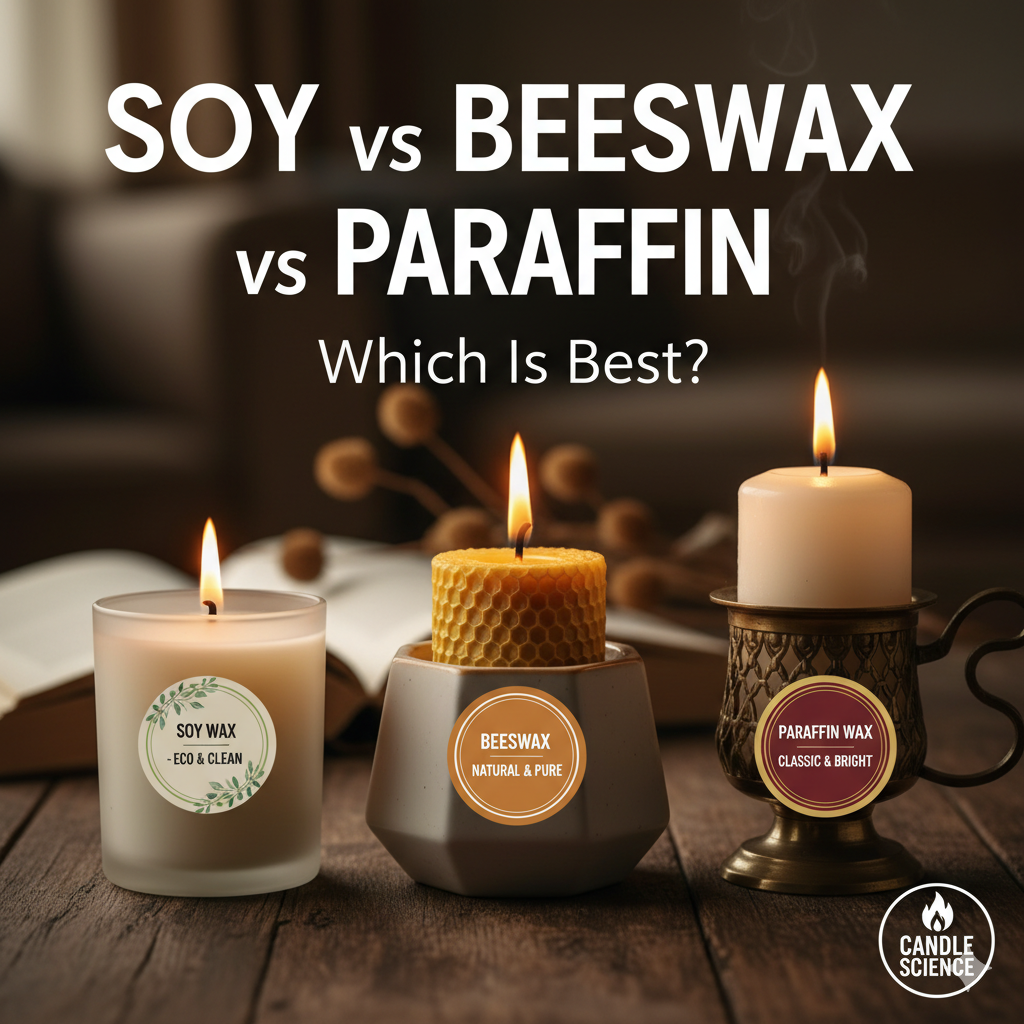
Soy vs Beeswax vs Paraffin Candles: Which Is Best?
Share
Not all candles are created equal. While they may look similar on the outside, what’s inside—soy, beeswax, or paraffin—makes a big difference in how they burn, smell, and impact your health and the environment.
In 2025, conscious consumers are paying closer attention to what goes into their favorite scented candles. Whether you’re looking for a non-toxic candle, something eco-friendly, or just the best burn for your buck, understanding the difference between candle wax types is crucial.
Let’s compare the three major players: soy candles, beeswax candles, and paraffin candles, so you can confidently choose what’s right for you.
What Are Soy Candles?
Soy candles are made from hydrogenated soybean oil—a natural, renewable resource. They've surged in popularity thanks to their clean burn and eco-friendly reputation.
Pros:
-
Eco-Friendly: Derived from plants, making them biodegradable
-
Clean Burning: Produces less soot than paraffin
-
Longer Burn Time: Slower to melt than many other waxes
-
Great for Scent Throw: Especially when blended with essential oils
-
Affordable: Often more budget-friendly than beeswax
Cons:
-
Can be softer or more prone to frosting (white coating)
-
Not always 100% soy—check labels for additives
-
Scents can sometimes be more subtle compared to paraffin
Ideal For: Those seeking affordable, clean-burning, eco-friendly candles for daily use.
What Are Beeswax Candles?
Beeswax candles are one of the oldest known types of candles, made from the wax produced by honeybees. They're prized for their natural scent and golden glow.
Pros:
-
Naturally Non-Toxic: No added fragrance needed
-
Air Purifying: Emits negative ions that may help reduce airborne pollutants
-
Bright Flame: Burns with a beautiful warm glow
-
Drip Resistant: Harder wax = cleaner burning
Cons:
-
Pricey: Typically more expensive due to production costs
-
Limited Scent Options: Natural honey aroma can clash with added fragrances
-
Not Vegan: Derived from animal byproduct (bees)
Ideal For: People looking for non-toxic candles with natural benefits and a touch of luxury.
What Are Paraffin Candles?
Paraffin candles are made from petroleum byproducts and remain the most common type of candle due to their affordability and scent versatility.
Pros:
-
Strong Scent Throw: Great for scented candles lovers
-
Affordable: Widely available and inexpensive
-
Firm Wax: Holds shape well in decorative molds
Cons:
-
Not Eco-Friendly: Derived from fossil fuels
-
Emits More Soot: Can contribute to indoor air pollution
-
Health Concerns: Some studies link paraffin emissions to potential irritants
Ideal For: Budget-conscious buyers who prioritize strong scents over sustainability.
Tips & Recommendations for Choosing the Right Candle
1. Prioritize Clean Burning
If you have pets, kids, or allergies, opt for non-toxic candles like soy or beeswax. Look for labels like “phthalate-free,” “lead-free wicks,” and “100% soy wax.”
2. Be Eco-Conscious
Choose eco-friendly candles made with biodegradable wax and recyclable containers. Many brands also use sustainable candle holders or offer refill options.
3. Match Candle to Purpose
-
Daily use? Go for soy candles—affordable and clean.
-
Special occasions or gifts? Beeswax candles offer a premium, natural touch.
-
Maximum scent? Paraffin candles deliver bold fragrance, but should be burned in well-ventilated areas.
Which Candle Wins?
Choosing between soy, beeswax, and paraffin candles depends on your lifestyle and values.
-
Choose soy candles for a balance of eco-friendliness, affordability, and variety.
-
Go with beeswax candles if you want the purest, cleanest option with natural benefits.
-
Pick paraffin candles if bold fragrance on a budget is your top priority—but be mindful of indoor air quality.
Try a few different types and see what works best for your space. Or mix and match for different occasions!
